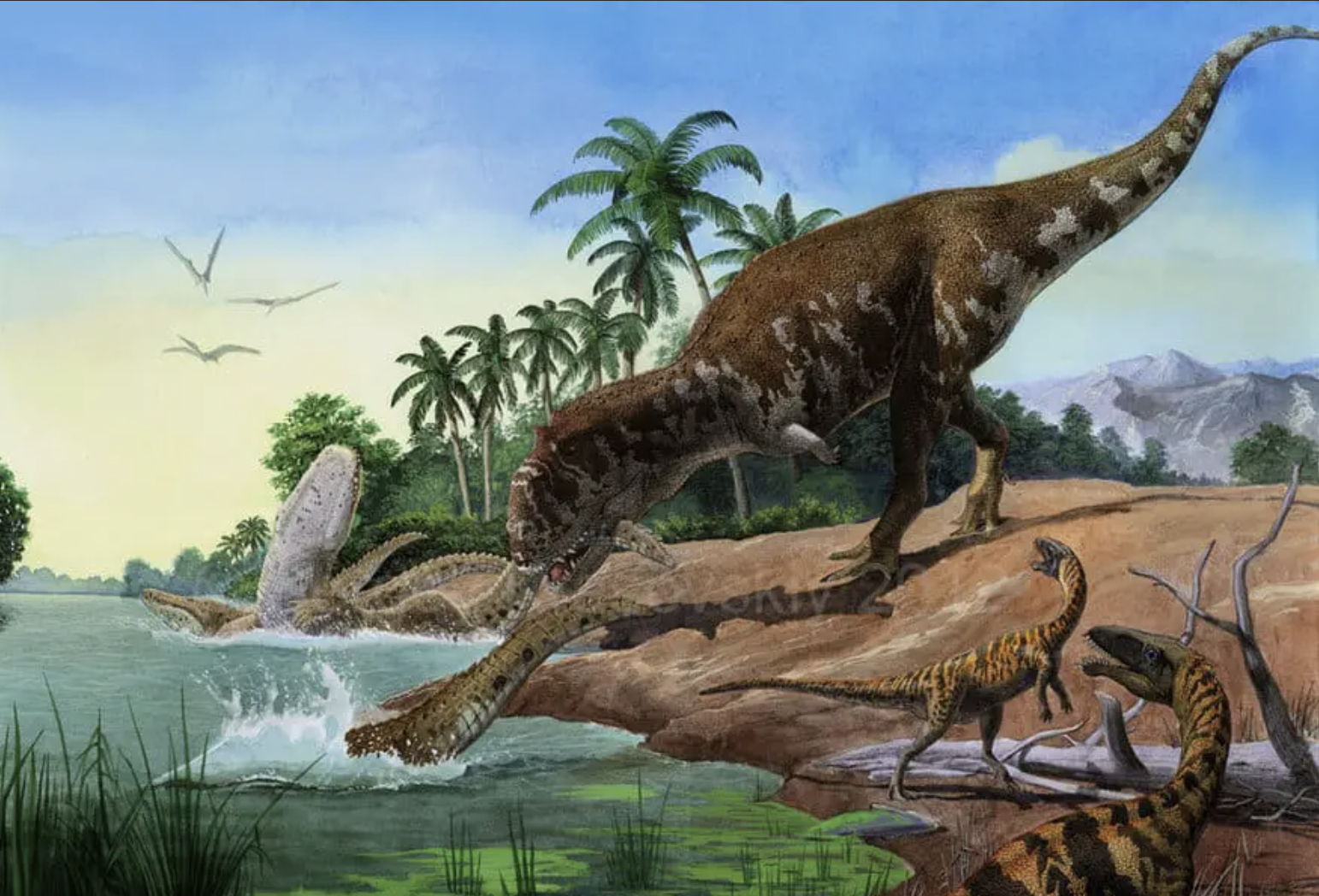Majungasaurus crenatissimus, the apex hunter of Late Cretaceous Madagascar



Majungasaurus crenatissimus was no ordinary predator—it was the apex hunter of Late Cretaceous Madagascar, prowling the floodplains of the Maevarano Formation around 70 million years ago. With a stocky build, short snout, and a thick horn atop its skull, this abelisaurid theropod stood out not just for its appearance but for its behavior. Unlike sleeker carnivores, Majungasaurus had a wide, heavily ossified skull and tiny forelimbs, even smaller than those of Tyrannosaurus rex. Its hindlimbs were muscular and built for power, not speed, suggesting ambush tactics over pursuit.
What truly sets Majungasaurus apart is the evidence of cannibalism—bite marks on Majungasaurus bones match its own dentition, making it one of the few dinosaurs with direct fossil proof of feeding on its own kind. Whether this was opportunistic scavenging or active predation remains debated, but it paints a chilling picture of survival in a harsh ecosystem.
Originally misidentified as Majungatholus, a supposed dome-headed herbivore, its true identity was revealed in 1996 when a complete skull was unearthed. This corrected decades of confusion and placed Majungasaurus firmly among the abelisaurids, with closer ties to Indian species than African ones—hinting at ancient land bridges between Madagascar and the Indian subcontinent.
Majungasaurus likely preyed on sauropods like Rapetosaurus, using its backward-curved teeth and powerful jaws to grip and crush rather than slice. Its bite was designed for control, not finesse. Today, it stands as one of the best-studied theropods from the Southern Hemisphere, a symbol of Madagascar's isolated and bizarre evolutionary history.